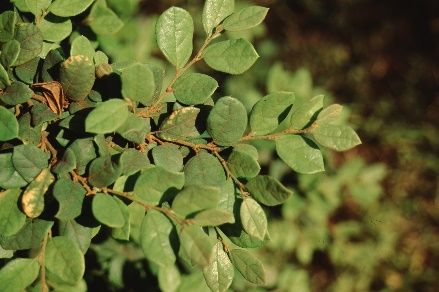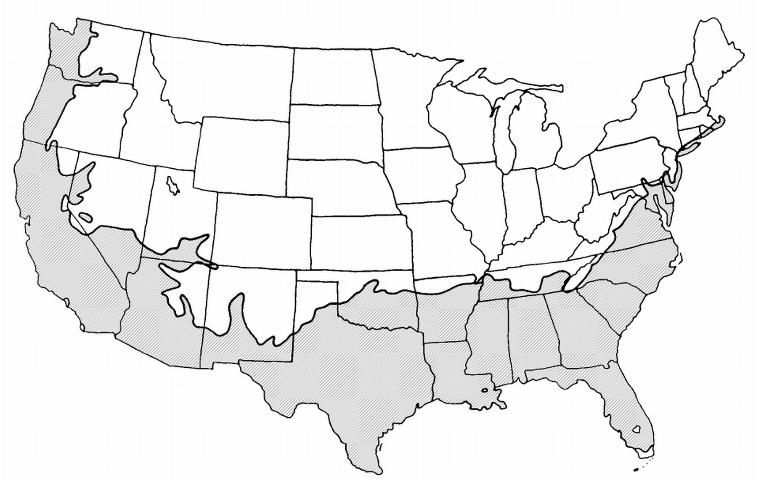Introduction
This native of China, Japan, and the Himalayas makes a lovely addition to any landscape. Although it can grow to about 10 feet tall, most specimens are seen at about 5 to 6 feet with a rounded canopy. Green, pubescent leaves emerge as the delicate white flowers fill the evergreen canopy for about two weeks in the spring. Loropetalum chinensis var rubrum 'Monraz' (Razzleberri) comes to the United States from Japan and has raspberry-red flowers. Growers report it flowers several times each year. It will make for a welcomed addition to the collection of small, red-flowered shrubs.

Credit: Edward F. Gilman, UF/IFAS

Credit: Edward F. Gilman, UF/IFAS
General Information
Scientific name: Loropetalum chinensis
Pronunciation: lor-roe-PET-tuh-lum chy-NEN-see
Common name(s): Chinese fringe bush, Chinese fringe flower
Family: Hamamelidaceae
Plant type: shrub, tree
USDA hardiness zones: 7 through 10A (Figure 3)
Planting month for zone 7: year round
Planting month for zone 8: year round
Planting month for zone 9: year round
Planting month for zone 10: year round
Origin: native to temperate and tropical Asia
Invasive potential: not considered a problem species at this time and may be recommended by UF/IFAS faculty (reassess in 10 years)
Uses: screen; hedge; border; specimen; espalier; small parking lot islands (< 100 square feet in size); medium-sized parking lot islands (100-200 square feet in size); large parking lot islands (> 200 square feet in size)
Availability: grown in small quantities by a small number of nurseries

Credit:
Description
Height: 6 to 15 feet
Spread: 8 to 10 feet
Plant habit: upright; vase shape; spreading
Plant density: dense
Growth rate: moderate
Texture: medium
Foliage
Leaf arrangement: alternate
Leaf type: simple
Leaf margin: serrate
Leaf shape: ovate
Leaf venation: pinnate
Leaf type and persistence: evergreen
Leaf blade length: less than 2 inches
Leaf color: green
Fall color: no fall color change
Fall characteristic: not showy
Flower
Flower color: red
Flower characteristic: pleasant fragrance; spring flowering
Fruit
Fruit shape: oval
Fruit length: unknown
Fruit cover: dry or hard
Fruit color: brown
Fruit characteristic: inconspicuous and not showy
Trunk and Branches
Trunk/bark/branches: not particularly showy; typically multi-trunked or clumping stems; can be trained to grow with a short, single trunk
Current year stem/twig color: brown
Current year stem/twig thickness: thin
Culture
Light requirement: plant grows in part shade/part sun
Soil tolerances: slightly alkaline; clay; sand; acidic; loam
Drought tolerance: moderate
Soil salt tolerances: unknown
Plant spacing: 36 to 60 inches
Other
Roots: usually not a problem
Winter interest: no special winter interest
Outstanding plant: plant has outstanding ornamental features and could be planted more
Pest resistance: no serious pests are normally seen on the plant
Use and Management
Fringe bush prefers an acidic soil pH and a mostly sunny position in the landscape, whereas azaleas prefer some shade. Use it as you would an azalea, but in a sunnier location. Its small size makes it well suited for planting in the front of a shrub border as an accent. Mass several together to make a dramatic statement and a nice, delicate flower show.
Pest and Diseases
Mites can yellow the foliage. Soil nematodes and root rot causes plant decline.
Micronutrient deficiencies appear in alkaline soil.